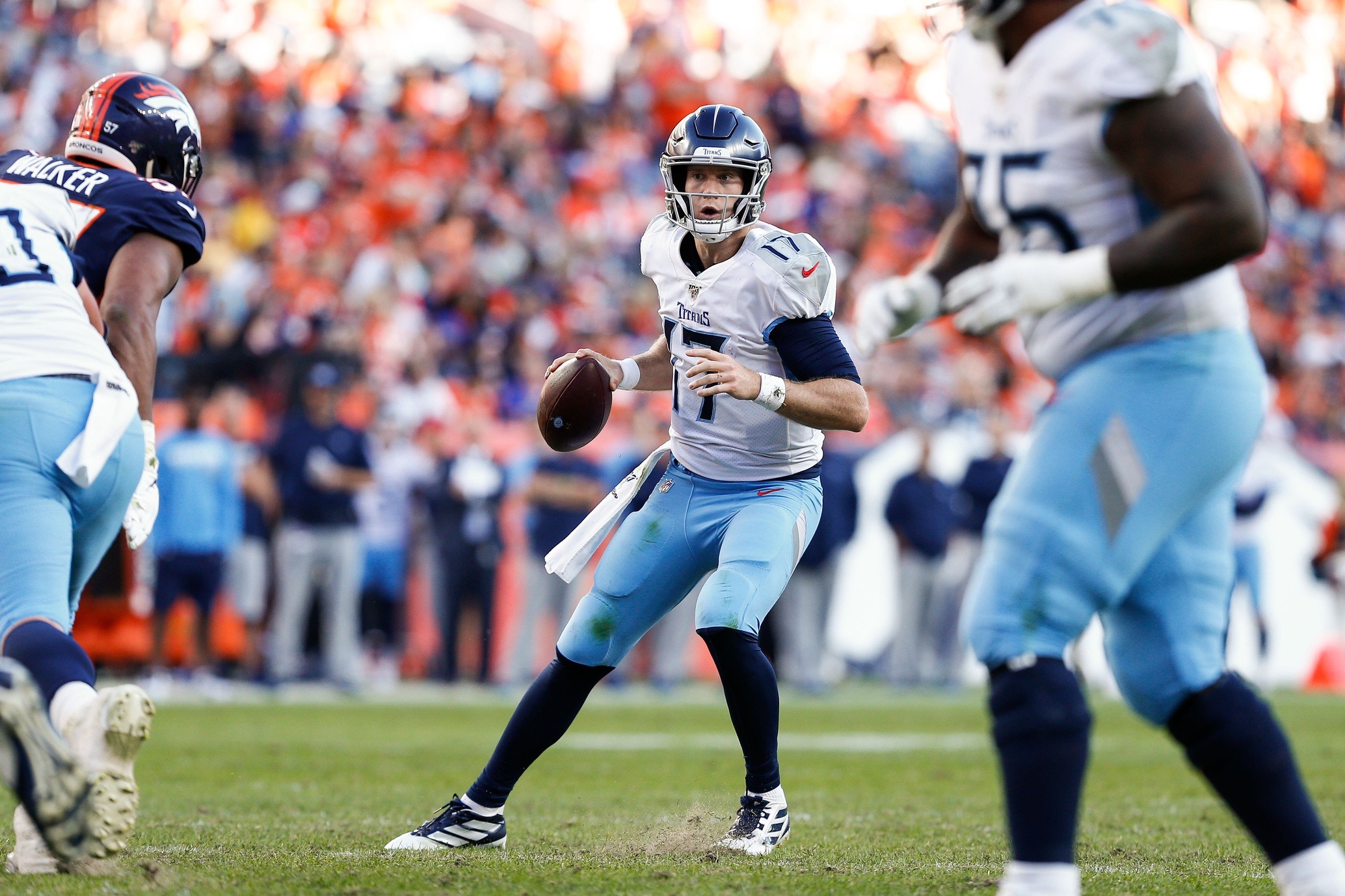© 2025 ALLCITY Network Inc.
All rights reserved.

If you think you know the Titans from their game against the Broncos last year … you don’t.
And if you think the Titans are that team that seemed perpetually poised to go 9-7 … they aren’t, even though they finished with that record for the fourth consecutive season last year.
The difference is obvious, of course. The insertion of Ryan Tannehill at quarterback changed everything about their outlook.
When Week 6 ended, the Titans were 2-4 and ranked 29th in yards per pass play. From Week 7 through the end of the postseason, the Titans were 9-4 and ranked ninth in yards per pass play.
But get this: Tennessee also finished Week 6 ranked 22nd in yards per rush. Despite the presence of the league’s best power runner in Derrick Henry, the Titans mustered a piddling 3.86 yards per attempt in last year’s first six games, placing them 21st in the NFL.
The rest of the way, they ranked third, averaging 5.0 yards per rush. Henry himself went from averaging 3.68 yards per attempt in Weeks 1-6 to to 5.75 after that. His transition wasn’t immediate; in the first three games after Tannehill assumed the reins, he averaged between 4.09 and 4.85 yards per attempt. In the next eight games, he failed to average at least 5.35 yards per carry just once.
What Tannehill did was simple, but clear. With near-flawless execution of playfakes and bootlegs, he forced defenses to account for the Titans through the air. When that happened, lanes opened for Henry, and he powered through exhausted defenses.
It was a symbiotic relationship that resulted in both players cashing in this offseason — for a combined $55.5 million in guaranteed money.
What Henry and the ground game does is straightforward. What Tannehill and the passing game do is intricate. These aspects are perfect complements.
“They like to run it straight downhill,” Broncos outside linebacker Bradley Chubb said. ” We have to fill those gaps, be in the right positions and play team defense.
“They do a lot of misdirection and boots while having Tannehill run around. He has great feet out there. We have to do our part. Everybody has their assignment to do and we have to stick to it.”
The misdirection often leads in the direction of wide receiver A.J. Brown. After Tannehill became the Titans’ quarterback last year, Brown, then a rookie, exploded as a vertical threat with the ability to add yardage after the catch. From Week 7 through the AFC Championship game, he had 10 plays of 30 or more yards — nine receptions and a 49-yard run. No NFL receiver or running back had more plays of 30 or more yards in that span.

It all comes back to Tannehill.
He doesn’t throw often; after he became the starter, only the Ravens and 49ers threw less often than the Titans, who threw on 51.2 percent of their snaps with Tannehill at quarterback.
But his impact was staggering, particularly in the red zone.
Consider this: Among 35 quarterbacks who attempted at least 35 passes in the red zone from Week 7 onward last year, only Baltimore’s Lamar Jackson threw touchdowns more often than Tannehill. Fourteen of Tannehill’s 34 red-zone attempts went for touchdowns, trailing only Jackson’s astounding 51.4 percent (18 touchdowns on 35 attempts), per statistics compiled via pro-football-reference.com.
“Once he got in there,” Fangio said, “their offense really took shape.”
And then there are the overall efficiency numbers for the Tannehill-led offense:
Offensive points per 60 minutes
- With Mariota: 15.70
- With Tannehill: 26.25
- Percentage increase: 67.2
Yards per snap
- With Mariota: 4.95
- With Tannehill: 6.55
- Percentage increase: 32.4
Yards per pass play
- With Mariota: 5.57
- With Tannehill: 7.64
- Percentage increase: 37.3
Points per possession
- With Mariota: 1.35
- With Tannehill: 2.52
- Percentage increase: 86.7
Yards per possession
- With Mariota: 24.65
- With Tannehill: 35.46
- Percentage increase: 43.8
(All figures with Tannehill include the postseason.)
One player, deemed expendable by the hapless Miami Dolphins, was the difference in turning one of the sport’s worst offenses one of its best — and perhaps its most efficient.
The Broncos beat the Titans by scoring 16 points last year. Given that the defense pitched a shutout, a field goal would have been enough. That win snapped a 15-game losing streak when the Broncos scored 16 or fewer points, and was just their second win since Peyton Manning’s retirement with 16 or fewer points on the board. A game-saving deflection by Shelby Harris in Week 17 last year added another such win, by a 16-15 count against the Raiders.
But that day was also the last time the Titans scored fewer than 20 points. From Week 15 of the 2018 season through that game in Denver, Tennessee failed to hit 20 points in six of nine games.
With Tannehill starting, the Titans hit or surpassed 20 points every time. And the Broncos’ record the last three seasons when allowing 20 or more points is 5-26, the third-worst in the league in that span.
With the Broncos’ offense still working to find continuity, it could fall on a Denver defense now without Todd Davis and Von Miller to do something that no one has done: keep the Tannehill-led Titans under 20.
Doing so could mean the difference between success and the Broncos absorbing a rare Week 1 home loss.
Comments
Share your thoughts
Join the conversation



